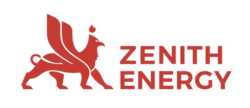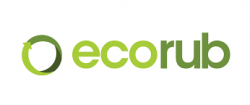Björn Borg (”Björn Borg” or ”the Company”) published its Q3 report for 2024 on the 15th of November, 2024. The following are key events that we have chosen to highlight from the report:
- Net Sales of SEK 285.1m – Equivalent to an increase of 8.8% Y-Y
- Solid Progress in Strategic Focus Areas
- Strong Momentum in Own-Ecom Continues
- Increased Marketing Spend Hampered EBIT-growth
- Solid Financial position
Strong Growth in the German Market
Björn Borgs net sales came in at SEK 285.1m (262.1) during the Company’s third quarter of fiscal 2024, marking a Y-Y increase of 8.8% when factoring in currency effects, and 10.4% when excluding these effects. The outcome fell short of our estimates (SEK 312.0m), where we had anticipated stronger growth within the Footwear category, following the takeover of the distribution from the previous third party that went bankrupt. Nevertheless, the main growth during the quarter stemmed from the Company’s two strategic focus categories, Footwear and Sports Apparel, presenting a Y-Y growth of 29% and 25%, respectively. Worth mentioning is that the Footwear category showed an impressive 110% growth Y-Y via Own-Ecom, a positive sign given that it constitutes a strategic important sales channel. Examining the other products categories, Underwear witnessed a slight decrease Y-Y (-1%), while Bags showed a temporary decrease of 14% Y-Y, following a strong development during H1-24.
Upon reviewing the channel mix for Q3-24, Own-Ecom continues to show solid momentum, as evident by the 32% growth rate Y-Y. Björn Borg’s largest channel, wholesale, grew by 5% Y-Y, where external e-tailers witnessed a growth of 21% compared to the same quarter last year, driven by robust performance in the German and Dutch markets. Own Retail Stores experienced a decline of 5% as a consequence of store closures, but when adjusting for the closure of stores, the development would have been slightly positive (1%). Distributors regained lost ground from the weaker development in H1-24, market by a Y-Y growth of 31% in Q3-24.
Concerning sales geography, the German market strands out positively, with an impressive growth of 44% Y-Y, primarily driven by strong sell-through at major retailers. The Company’s largest market, Sweden, declined with 3% Y-Y, with Own-Ecom contributing positively with a 34% growth, while sales to wholesalers hampered the overall growth within the market. Regarding the other markets, the Netherlands grew by 5%, Finland by 29%, Belgium by 23% and Denmark by 32%.
Increased Marketing Spend is Expected to Fuel Future Growth
During Q3-24, the Company achieved a gross margin of 52.1% (when including FX-effects) and 51.2% when excluding currency effects, which was slightly below our estimates of 52.2%. The gross margin exhibited a decrease from 52.6% in Q3-23 but an increase from the previous quarter (Q2-23), when the gross margin amounted to 51.8%. The lower gross margin Y-Y mainly stems from the Footwear category constituting a larger fraction of sales as well as increased sales to larger customers with higher discounts. While Footwear currently hampers the overall gross margin, the product category is projected to contribute positively to the gross margin in the long term.
Looking further down the P&L, Björn Borg reported an operating result (EBIT) of SEK 42.0m (40.9) for the third quarter, corresponding to an EBIT margin of 14.7%. Adjusting for currency, the operating result amounted to SEK 41.1 (37.0), corresponding to a currency-neutral EBIT margin of 14.4%. This outcome fell short of our estimates (SEK 46.2m), where the deviation from our estimates primary stems from lower-than-expected net sales growth. During Q3-24, the Company increased the marketing spend by SEK 7m, thereby amounting to SEK 23m during the quarter. The higher marketing spend is expected to support continued brand momentum, which is estimated to boost future growth.
Financial Position
Björn Borg reported SEK -88.8m (-61.5) in free cash flow (FCFF) during the third quarter, primarily due to changes in working capital. The FCFF generated in Q3-24 follows the usual seasonal trend seen in the industry, where Björn Borg typically ties up a significant portion of working capital in Q1 and Q3, and, conversely, working capital generally frees up during Q2 and Q4. The FCFF LTM of SEK 47.2m, which provides a more representative illustration of the underlying cash flow generation, shows a decrease compared to the same period last year where the FCFF amounted to SEK 52.8m, where one of the reasons is the footwear integration, which puts short term pressure on the working capital.
At the end of the quarter, Björn Borg net debt position (excl. leases) amounted to SEK 139m (94), which could be compared to SEK 51m at the end of last quarter (Q2-24), where the increase mainly stems from utilization of the overdraft facility. With the current EBITDA LTM of SEK 138m, the net debt/EBITDA ratio equals approx. 1.0x, indicating a continued healthy financial position moving forward.
Concluding Remarks About the Report
In conclusion, Björn Borg’s reported a Q3 report that fell short of our estimates regarding top-line and profitability, mainly as a consequence of slower than anticipated sales within Footwear. However, it is promising to see solid progression in the Company’s strategic focus areas, namely Footwear, Sport Apparel, Own-E-Com and the German market. The strong development within these key focus areas demonstrates that Björn Borg’s strategic initiatives are bearing fruit. Moreover, increased marketing spend is estimated to boost brand awareness and fuel future growth, thereby enabling Björn Borg to increase the market share further ahead.
We will return with an updated equity research report of Björn Borg.





